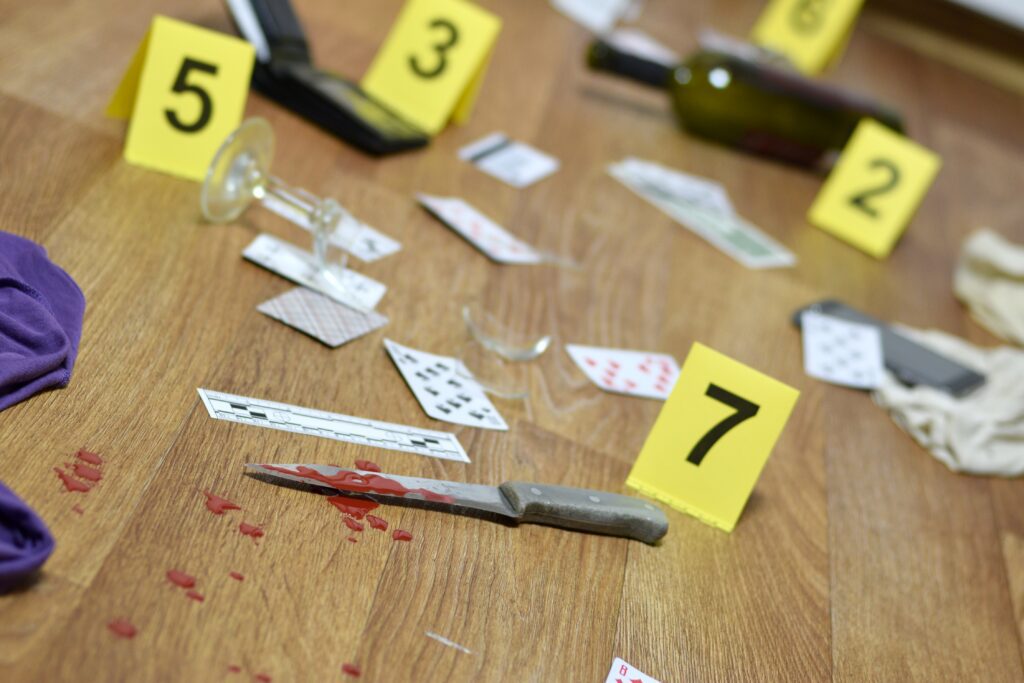Brazil is a country with a high crime rate. Violent crime, especially drug-related crime and gun violence, is a serious problem in many parts of the country. The murder rate in Brazil is one of the highest in the world and the number of killings by police violence is also high. Organized crime, especially drug cartels, play an important role in crime in the country.
Economic inequality and poverty in Brazil also contribute to crime. In poor neighborhoods and favelas, there is often little government presence and few opportunities for legal sources of income, which can contribute to people becoming involved in criminal activity.
In recent years, the Brazilian government has tried to fight crime in the country by strengthening police forces and introducing programs to fight poverty and promote economic development. However, much remains to be done to get a grip on crime in Brazil.
Table of Content
ToggleTransit point for drug cartels
The country is an important transit point for the illegal drug trade in South America and also has a growing production of cannabis and cocaine. Organized crime, especially drug cartels, plays an important role in drug-related crime in the country.
Most drugs trafficked through Brazil originate in Colombia and Peru and are smuggled to the USA and Europe. Some of the best-known drug cartels that control the drug trade through Brazil are the Colombian Cartel of Medellín and the Colombian Cartel of Cali. There are also a large number of local drug cartels and gangs in Brazil that are active in drug trafficking.
Drug-related crime leads to violence and corruption and also has a negative impact on the health of the population. The number of drug deaths in Brazil has increased in recent years due to the available drug selection and quality, as well as the enforcement of drug controls.
One of the most commonly used drugs is cannabis, which is also produced in Brazil. Other commonly used drugs in Brazil are crack, cocaine, and synthetic drugs such as ecstasy and methamphetamine. In particular, Crack causes extreme tension in Brazil and many drug-related deaths every year.
Crackolândia is the name that has often been used in the media for a neighborhood in São Paulo that has become known for crack use and the problems associated with it. Crack is a highly potent and addictive form of cocaine that is common in Brazil. The neighborhood became a center for crack use in the 1990s and has since become known for its high crime rate and prevalence of poverty and violence.
The Brazilian government has tried to address the problem in Crackolândia in recent years by introducing programs to prevent drug abuse and support drug addicts. However, it remains a challenge to combat crack use and related problems in Crackolândia and other parts of the country.
The efforts that the government of Brazil has taken to address the problem of drug abuse and drug trafficking in the country include:
Law enforcement: The government has increased resources and funding for law enforcement agencies to help them better combat drug trafficking and drug-related crime. This includes efforts to disrupt and dismantle organized crime groups that are involved in the drug trade.
Prevention and education: The government has also invested in programs to prevent drug abuse, particularly among young people. This includes initiatives to raise awareness about the dangers of drug use and to provide education and support to those at risk of becoming involved in drug abuse.
Treatment and rehabilitation: The government has also established a range of treatment and rehabilitation programs to help those struggling with drug addiction. These programs aim to provide individuals with the support they need to overcome their addiction and lead healthy and productive lives.
International cooperation: Brazil has also worked closely with other countries and international organizations to combat drug trafficking and drug abuse. This includes sharing intelligence and collaborating on law enforcement efforts to disrupt drug trafficking networks and interdict illegal drugs.
Gun Violence in Brazil
Gun violence in Brazil is a significant problem and is often linked to organized crime, drug trafficking, and other forms of violence. Some of the factors that contribute to the high levels of gun violence in Brazil include:
High levels of poverty and inequality: Brazil has a high level of poverty and income inequality, which can create conditions that are conducive to violence.
Weak law enforcement and justice system: The justice system in Brazil is often weak and inefficient, which can make it difficult to effectively combat crime and bring perpetrators to justice.
Easy access to guns: Brazil has relatively lax gun laws, and there is a high level of gun ownership in the country. This makes it easy for people to obtain guns, which can contribute to high levels of violence.
Drug trafficking: Brazil is a major transit point for drugs moving from South America to other parts of the world, and drug trafficking is often accompanied by violence.
Youth unemployment: Unemployment, particularly among young people, is a major problem in Brazil. This can lead to social and economic frustrations, which can contribute to violence
The government of Brazil has implemented a number of measures to address gun violence in the country. These measures include:
Implementing stricter gun control laws: Brazil has strict gun control laws that regulate the possession, sale, and use of firearms. These laws include mandatory background checks for gun ownership and strict penalties for illegal possession or use of firearms.
Increasing police presence and resources: The government has also increased the number of police officers and resources available to address gun violence in Brazil. This includes providing additional training and equipment to police officers and increasing the number of patrols in high-crime areas.
Promoting community-based programs: The government has also supported community-based programs that aim to prevent gun violence by addressing the root causes of violence, such as poverty, unemployment, and social inequality. These programs often involve providing education, job training, and other resources to at-risk communities.
Implementing public health approaches: Brazil has also implemented public health approaches to gun violence prevention, including research into the underlying causes of gun violence and the development of strategies to prevent it.
Strengthening partnerships with other countries: The government has also sought to strengthen partnerships with other countries to address gun violence, including through cooperation on law enforcement and the exchange of information and best practices.
It is worth noting that gun violence remains a significant problem in Brazil, and more needs to be done to address this issue.
Factors contributing to the high level of murder
There are a number of factors that contribute to the high levels of murder in Brazil. Some of the main reasons for murder in the country include:
Organized crime: Brazil has a significant problem with organized crime, including drug trafficking and other forms of illicit activity. These criminal organizations often use violence to protect their interests and settle disputes, which can lead to high levels of murder.
Gang activity: Gangs are also a significant problem in Brazil, and gang-related violence is a major contributor to the country’s high murder rate.
Personal disputes: Many murders in Brazil are the result of personal disputes, such as arguments between family members or acquaintances.
Robbery: Robbery is a common motive for murder in Brazil, as criminals may use violence to obtain money or other valuable items.
Domestic violence: Domestic violence is also a major problem in Brazil, and many murders are the result of violent incidents within the home.
Police violence: There have also been instances of police violence in Brazil, which has contributed to the country’s high murder rate. In some cases, police officers have been accused of using excessive force or committing murder while on duty.
Top 5 Rankings in 2020
It is difficult to provide a ranking of murder rates in Brazil, as the country is divided into 26 states and the Federal District, and the rates of murder can vary significantly between these regions. According to data from the Brazilian Public Security Forum, the states with the highest murder rates in Brazil in 2020 were:
Acre: The state of Acre had the highest murder rate in Brazil in 2020, with a rate of 59.4 murders per 100,000 inhabitants.
Alagoas: The state of Alagoas had the second-highest murder rate in Brazil in 2020, with a rate of 55.7 murders per 100,000 inhabitants.
Ceará: The state of Ceará had the third highest murder rate in Brazil in 2020, with a rate of 51.6 murders per 100,000 inhabitants.
Rio de Janeiro: The state of Rio de Janeiro had the fourth-highest murder rate in Brazil in 2020, with a rate of 47.8 murders per 100,000 inhabitants.
Pernambuco: The state of Pernambuco had the fifth-highest murder rate in Brazil in 2020, with a rate of 47.7 murders per 100,000 inhabitants.
It is worth noting that these figures may not be fully comparable due to differences in the way that murder statistics are collected and reported in different states.
Crime against tourists
Crime against tourists is a problem in some parts of Brazil, and tourists should take steps to protect themselves and be aware of their surroundings when traveling in the country. Some common crimes that tourists may encounter in Brazil include:
Pickpocketing: Pickpocketing and petty theft are common in crowded areas, such as tourist attractions, markets, and public transportation.
Robbery: Robbery, including mugging and carjacking, can occur in Brazil, particularly in areas that are less safe or more isolated.
Scams: Tourists may also be targeted by scams, such as fake taxi drivers or street vendors selling counterfeit goods. Additionally credit card scams shall be mentioned at this point.
Sexual assault: Sexual assault and harassment are also problems in Brazil, and tourists, particularly women, should take precautions to protect themselves.
To reduce the risk of crime while traveling in Brazil, tourists should:
Stay in safe areas: Avoid staying in areas that are known to be unsafe, such as favelas (shantytowns).
Use common sense: Be aware of your surroundings and avoid walking alone at night or in isolated areas.
Keep valuables safe: Keep valuables such as passports, credit cards, and cash in a secure place, such as a hotel safe.
Use official transportation: Use official, licensed taxis or public transportation to get around, rather than unlicensed “pirate” taxis or buses.
Be cautious of scams: Be wary of strangers who approach you offering goods or services, and be cautious of anyone who seems overly friendly or who tries to distract you.
Conclusion
Although this article mentions a rather sad side of Brazil, from our point of view its publication is also as important as the description of all the other beautiful facets of Brazil that are worth experiencing.
It cannot be overlooked that Brazil, even in 2022, is a country with a high crime rate worldwide that does not shy away from violence and murder. Nevertheless, it is important to keep a certain distance when reading through this post. It is important to distinguish between criminal acts in which the inhabitants of Brazil of all income levels and social circumstances are involved and such acts in which tourists are hopefully involuntarily involved.
While it may be difficult for locals to avoid crime, depending on their social and economic environment, the risks for tourists are manageable and easily avoidable with appropriate foresight and behavior.
In my 15 years of traveling Brazil as a tourist, nothing has ever happened to me. However, from a country that has more than 200 million inhabitants, one cannot expect a low crime rate from a country of 8 million inhabitants from Europe. This is also the case when a government tries to combat or even contain the problems with continuous measures.












